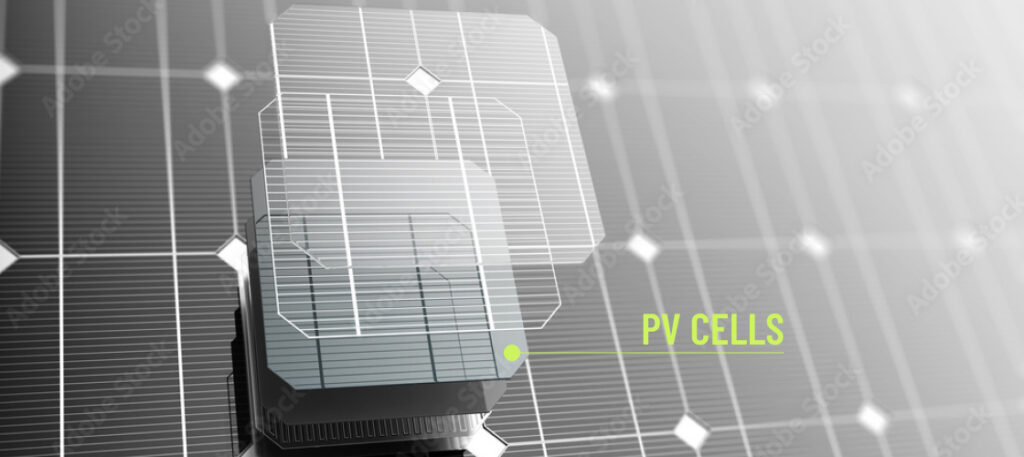Analyzing Agrivoltaics, The Future of Farming
If the United States is serious about reaching its goal of a net-zero emissions economy by 2050, we’re going to need a lot of solar panels. According to the U.S. Department of Agriculture, ground-based solar will need 0.5% of the land in the contiguous U.S. to reach that goal. Realistically, strictly putting solar panels on businesses and houses isn’t enough to satisfy the 0.5% land requirement.

What is Agrivoltaics?
Currently, 43% of contiguous U.S. land is being used for agriculture, by far the most of any category. Researchers have been studying potential dual-use lands, areas that will benefit in multiple ways from the placement of solar panels. That’s where agrivoltaics comes in. Agrivoltaics is the use of land for both agriculture and solar energy. Agrivoltaics is sometimes called agrisolar, dual-use solar, or low-impact solar.
Benefits of Agrivoltaics
According to the Natural Resources Defense Council, growing crops between solar panels can produce a unique set of agricultural and environmental benefits. For example, the solar panels provide shade for the crops, which allows the soil to retain more water. This means that the soil requires less irrigation. In addition, the panels protect the crops from extreme weather. Some studies show that crops grown under solar panels can grow better, stronger, and longer than normal crops. And these effects are even greater in hotter and arid climates.
Agrivoltaics is also economically beneficial. Farmers can lease their land to solar developers to give them an extra set of income. This gives farmers an opportunity to invest in new technologies and protects farmers during years that have poor crop yields. Additionally, solar developers will benefit from this because the demand for renewable energy is so high and only growing.
Research even shows that planting crops under solar panels can improve the performance of the panels. Because solar panels perform worse in extreme heat, they benefit from being in cooler areas. Planting many crops under panels can lead to increases in ground shade and humidity. This decreases the temperature around the solar panels and increases energy yields. According to recent studies, solar panels with plants beneath them produce 10 percent more than panels placed over gravel. Agrivoltaics has proven to have environmental and economic benefits that increase the quality of the crops and the amount of energy yielded from the solar panels. So, it seems like a no-brainer that we will see a substantial increase in farms with solar panels in the future.

History of Agrivoltaics
According to Renewable Pedia, the concept of agrivoltaics was introduced in 1981 by German scientists Armin Zastrow and Adolf Goetzberger. They theorized that using farmland for both plant cultivation and solar energy would improve the overall production of the land. The prototype for agrivoltaic farming was developed in Japan in 2004. However, the term “Agrovoltaic” was not coined until 2011 when the practice was first published. Since then, Agrivoltaic Farming has been used in many countries around the globe. Countries like the U.S., China, Italy, Japan, and Germany have all implemented agrivoltaics into the farming system. A new system of agrivoltaics was developed at the 2017 Intersolar conference in Munich. This new system has made agrivoltaic farming more affordable because less steel is now required.
Despite the many benefits of agrivoltaic farming, it is not beneficial for all types of plants. Crops that can’t grow in the shade will not be able to be used in agrivoltaic farming. However, many crops grow better in shady areas. Salad greens, leafy greens, root vegetables, brassica vegetables, leeks, onions, and herbs are all shade tolerant. Beans, peppers, tomatoes, spices, and herbs are examples of popular crops that can be grown from agrivoltaic farming.

What is a solar farm?
A solar farm, or solar garden, is an arrangement of solar panels that provides an electric grid with energy. They are called solar farms not because they provide food, but because they produce energy for local communities. According to Perch Energy, the U.S. added between 200 and 300 new solar farms each year between 2014 and 2019. Solar farms alone now produce more than 85 gigawatts of electricity each year. That’s enough to power 16.5 million homes.
There are two main types of solar farms: Utility-scale solar farms and community solar farms. Utility-scale solar farms belong to utility companies and private power companies. Community solar farms can be financed by local businesses and residents. Greenway built and operates a low-income solar farm near Rochester, Minnesota. Although there are multiple different types, agrivoltaic farms are great examples of solar farms. What separates agrivoltaic farms from other solar farms is that they are dual-use. They are not only supplying an electrical grid with renewable energy, but they are benefitting the crops that grow under the solar panels. Agrivoltaic farming is possibly the most efficient way to use farmland.
Fill out our client questionnaire today, so we can reach out and help you start taking advantage of the many benefits of solar!
Here at Greenway, we believe in solar for all. For homeowners, we install standard solar panels, EV chargers, battery storage, and the SPAN panel. We are also a certified installer of the Tesla Solar Roof and Powerwall. If you don’t own a home but want the benefits of solar, then subscribing to one of our three community solar gardens might be right for you.
Certified to Install:



Get Greenway Updates in Your Inbox.
Enter your email to receive notifications of new posts.







